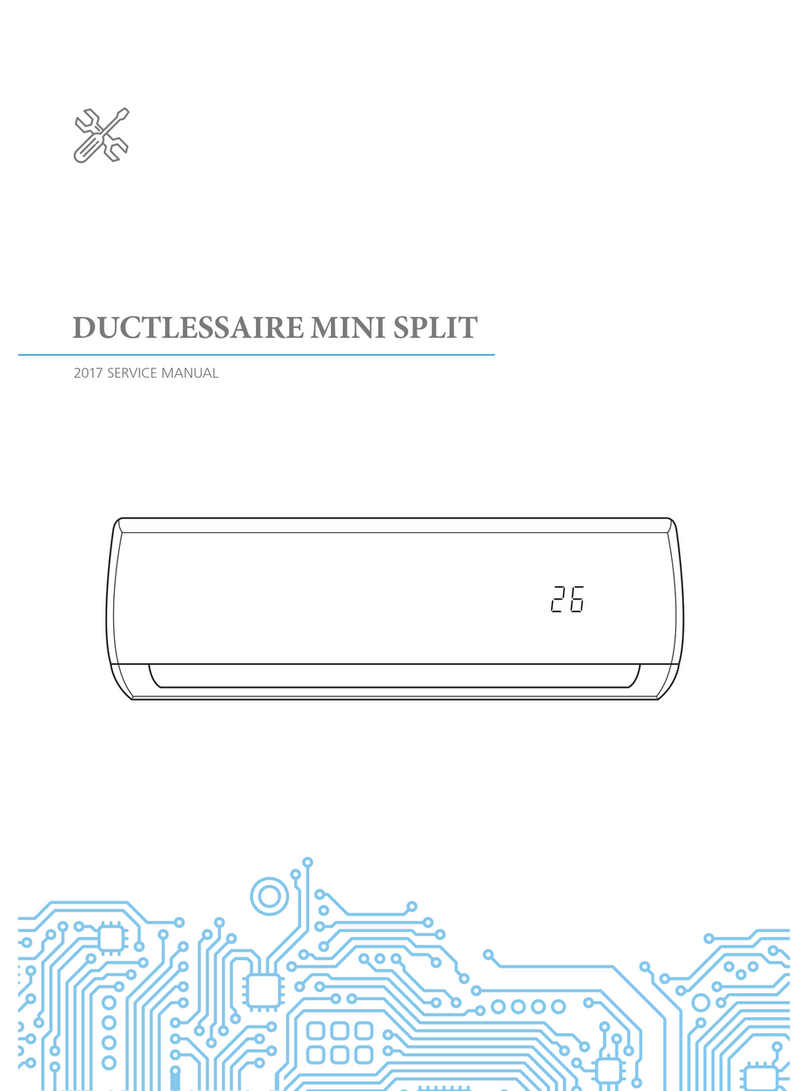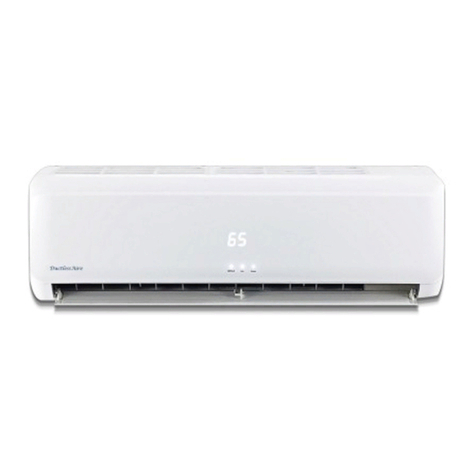2
Do not use the product in a tightly
closed space for a long time.
Oxygen deficiency could occur.
When flammable gas leaks, turn off the
gas and open a window for ventilation
before turning the product on.
If strange sounds or smoke comes from
product, turn the breaker off or
disconnect the power supply cable.
There is risk of electric shock or fire.
Stop operation and close the window
in storm or hurricane. If possible,
remove the product from the window
before the hurricane arrives.
There is risk of property damage, failure
of product, or electric shock.
Do not open the inlet grill of the
product during operation. (Do not
touch the electrostatic filter, if the unit
is so equipped.)
There is risk of physical injury, electric
shock, or product failure.
When the product is soaked, contact
an authorized service center.
There is risk of fire or electric shock.
Be sure water could not enter the
product.
There is risk of fire, electric shock, or
product damage.
Ventilate the product from time to
time when operating it together with a
stove etc.
There is risk of fire or electric shock.
Turn the main power off when cleaning
or maintaining the product.
There is risk of fire or electric shock.
When the product will not be used for
a long time, disconnect the power
supply plug or turn off the breaker.
There is risk of product damage or
failure, or unintended operation.
Take care to ensure that nobody could
step on or fall onto the outdoor unit.
This could result in personal injury and
product damage.
CAUTION
Always check for gas (refrigerant)
leakage after installation or repair of
product.
Low refrigerant levels may cause failure
of product.
Install the drain hose to ensure that
water is drained away properly.
A bad connection may cause water
leakage.
Keep level even when installing the
product.
It can avoid vibration of water leakage.
Do not install the product where the
noise or hot air from the outdoor unit
could damage the surrounding.
It may cause a problem for your
neighbors.
Use two or more people to lift and
transport the product.
Do not install the product where it will
be directly exposed to sea wind (salt
spray).
It may cause corrosion on the product.
Corrosion, particularly on the condenser
and evaporator fins, could cause
product malfunction or inefficient
operation.
Operational
Do not expose the skin directly to cool
air for long periods of time. (Do not sit
in the draft.)
Do not use the product for special
purposes, such as preserving foods,
works of art, etc. It is a consumer air
conditioner, not a precision refrigerant
system.
There is risk of damage or loss of
property.
Do not block the inlet or outlet of air
flow.
Use a soft cloth to clean. Do not use
harsh detergents, solvents, etc.
There is risk of fire, electric shock, or
damage to the plastic parts of the
product.
































